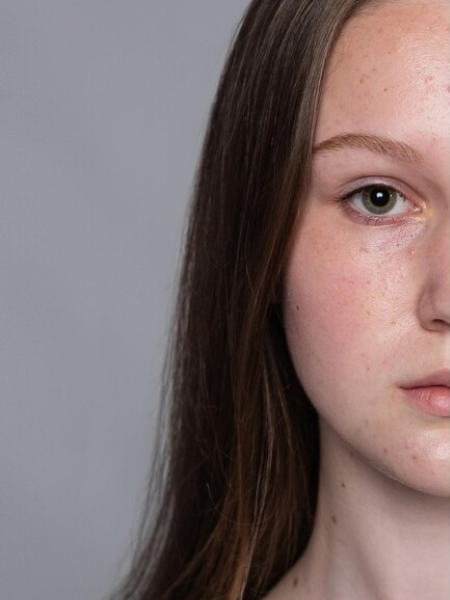
Hyperpigmentation, pigmentation, and uneven skin tone all refer to discolouration on your skin. From small freckle-size spots to large patches. Pigmentation occurs when the skin produces clusters of harmless darker skin. These clusters can occur on your face, other areas regularly exposed to the sun, and anywhere on your body. With our year-round sunlight, you’re more likely to experience pigmentation.
Melanin is what gives you your unique skin colour, hair colour, and eye colour/pigment. Your body is intelligent and knows how to renew cells with your natural pigments.

In addition to pigment, melanin plays a crucial role in protecting your skin from UV rays. It absorbs and redistributes sunlight to your skin’s upper dermal layer. Prolonged exposure to unfiltered UV rays puts melanin production in overdrive. This protective process can create clusters of discoloured skin. This is one of the many reasons to apply and reapply sunscreen daily.

No. However, all new moles, dark spots, and painful and itchy patches on your skin should be immediately assessed by a medical professional to rule out skin cancer.
With 2 out of 3 Queensland residents developing skin cancer, uneven skin tone is far from your only concern. When your skin absorbs more sunlight than melanin can redistribute, the UV rays damage your skins’ DNA—increasing your risk for skin cancer. Filter UV rays with a broad-spectrum sunscreen.
Also referred to as age spots, liver spots, and solar lentigines, sunspots are often brown, tan, black, or red. They can be as small as a freckle or pencil eraser or much larger. Per their name, they form on the sun-exposed areas of the body, including your nose, cheeks, face, hands, arms, and chest. Over 90 percent of adults over the age of 50 have at least one sunspot.
Also referred to as the ‘mask of pregnancy’ and chloasma, these are large patches of light brown, dark brown, and blue-grey spots. Melasma often displays as large patches on the face, but it can occur elsewhere on your body. There are many contributing factors to melasma, but it’s most likely to form during pregnancy, perimenopause, and andropause. Approximately 90% of those diagnosed with melasma are women.
This refers to scars that form anywhere on your body after a cut, scrape, minor burn, or other skin injury.

Not necessarily. Pigmentation may fade on its own, but it may also darken and spread. Haven Aesthetics Centre provides a variety of scientifically proven treatments that can fade discolouration and stimulate cellular repair.
Schedule an appointment to discuss personalized solutions for fading your scars, evening out your skin’s texture, and brightening your complexion.





